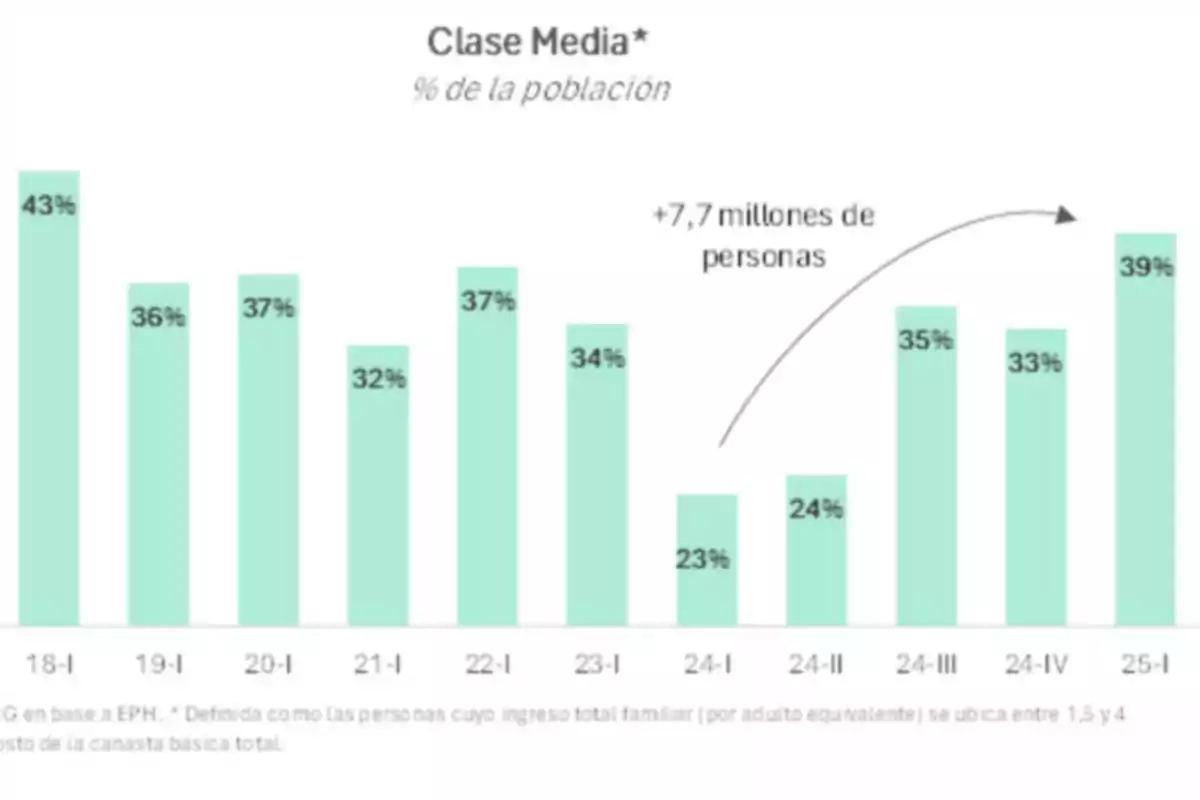
Thanks to Milei, Argentina adds 7.7 million people to the middle class in one year
The middle class returned to pre-pandemic levels thanks to the national government's macro policies
Thanks to the macroeconomic order promoted by the government of Javier Milei, 39% of the population has rejoined the middle class.
In just one year, this social segment grew by 16 percentage points, marking one of the fastest recoveries since the COVID crisis and the post-2019 devaluation.
A significant leap: from 23% to 39% in one year
According to data from the consulting firm LCG based on the Permanent Household Survey (EPH) by INDEC, the middle class went from representing 23% of the population at the beginning of 2024 to reaching 39% in the first quarter of 2025. This is equivalent to 7.7 million people who managed to improve their family income and leave the vulnerability zone.

What does it mean to be middle class today?
The study defines middle class as households whose total family income, adjusted per equivalent adult, is between 1.5 and 4 times the value of the Total Basic Basket (CBT).
This means these are people who can cover their basic needs and have a certain margin for consumption without falling into poverty.
The impact of fiscal surplus and stabilization
The recovery of the middle class coincides with the first visible effects of the fiscal order imposed by the administration of Javier Milei. The sustained surplus, monetary discipline, and reduction of public spending created conditions for a recovery in purchasing power among middle sectors, which have historically suffered from inflationary swings and job loss.
Macroeconomic stability and the reversal of imbalances accumulated over years seem to have restored predictability to the incomes of many households.
More posts: